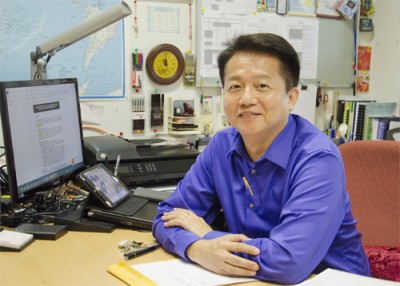Why Singapore’s English Teachers Should Embrace Singlish, Not Fight It
Is it time for Singaporean educators to embrace Singlish as a legitimate learning tool? What the Research […]
Read More
Metacognition can be a mind-boggling concept for many, including teachers. An NIE researcher is investigating metacognitive awareness of teachers while they are teaching in class.
Metacognition has always been emphasized in the Singapore Math curriculum. For more than 20 years, it has been one of the five inter-related components of the Math Curriculum Framework. The central focus is to use Math to solve problems.
Despite its constant presence, especially in the area of mathematical problem-solving, we are not sure how well teachers understand or are conscious of the use of metacognition by their students.
But first, what is metacognition? Why is it useful for us to study it in greater detail?
According to NIE Assistant Professor Lee Ngan Hoe, metacognition is “the cognition of cognition (or thinking about thinking)”.
Sounds mind-boggling, but Ngan Hoe explains further. Math students who put metacognition into practice will think about why they chose a particular approach to solve a problem, start to monitor their thinking to evaluate and regulate it.
But not all students are like that, shares Ngan Hoe.

Ngan Hoe hopes to create a resource page with metacognitive instructional strategies for Math teachers.
“Metacognitive instructional strategy is when the teacher knows that this is important, and give key prompts to students to be more aware of their thinking by either questioning, thinking aloud or discussing with others what they are thinking,” explains Ngan Hoe.
In other words, students should start to make their thinking audible or visible by communicating what they are thinking, be it in written or verbal form.
Some teachers are doing this, but they may not know they are doing it, shares Ngan Hoe. “They may know that getting students to think about their thinking is good, but they may not know how to go about promoting such metacognitive behaviours.”
Ngan Hoe has been conducting in-service courses on metacognition for the last 5 years for Math teachers, and is keen to explore the level of awareness and practice of metacognitive instructional strategies among Math teachers.
“As metacognition has been in our national Math curriculum framework since the 1990s, it is timely and important to evaluate how well this is practiced by teachers in the classroom,” explains Ngan Hoe.
Research shows that the key difference between expert and novice problem solvers is in their executive functioning, or their ability to control or regulate their own thinking.
Metacognition is not an easy concept to understand. Based on his interaction with the teachers, Ngan Hoe shares that a lot of Math teachers have difficulty articulating what metacognition is.
His project aims to find out teachers’ awareness and practice of metacognition, so as to identify any gaps in their use of it in the Math classroom.
Other than answering a survey on their knowledge and practice, teachers in this study will also nominate a Math class to be observed by researchers. These lessons will be video-recorded and analysed by the research team and triangulated with the teachers’ survey responses.
Ngan Hoe is currently working with a senior curriculum specialist from MOE and a Master Teacher from the Academy of Singapore Teachers (AST) on his project. The findings of the project will not only provide insights to the practice in the classroom, but also feedback on how the curriculum has impacted classroom practice.
“By working with the curriculum specialist, we can help to facilitate better use of research to inform the curriculum”, says Ngan Hoe. “Working with the Master Teacher also helps us to work better with AST to plan and conduct relevant and timely professional development courses that are informed by research.”
Ngan Hoe observed that there is a lack of resources on metacognitive instructional strategies for teachers. He hopes to work with the Master Teacher to start a resource base on the AST website – by teachers for teachers.
“We can start looking out for teachers (using the video recordings) who have displayed an exemplary use of metacognitive instructional strategies in the classrooms,” says Ngan Hoe. “If there are, we could create a section on the website to include these resources, to help teachers boost their competency and proficiency in carrying out such strategies in the classroom.”

Ngan Hoe aims to tap on this study to eventually develop a survey for a larger group of teachers, to obtain more accurate insights into their awareness and practice of metacognitive instructional strategies.
It is his hope that teachers will become more conscious of the role that metacognition plays, and to better address it in the Math classroom.
“If we can develop our students to be more metacognitive, we are in effect helping them engage in the practice of expert problem solving, which is what we all want at the end of the day.”